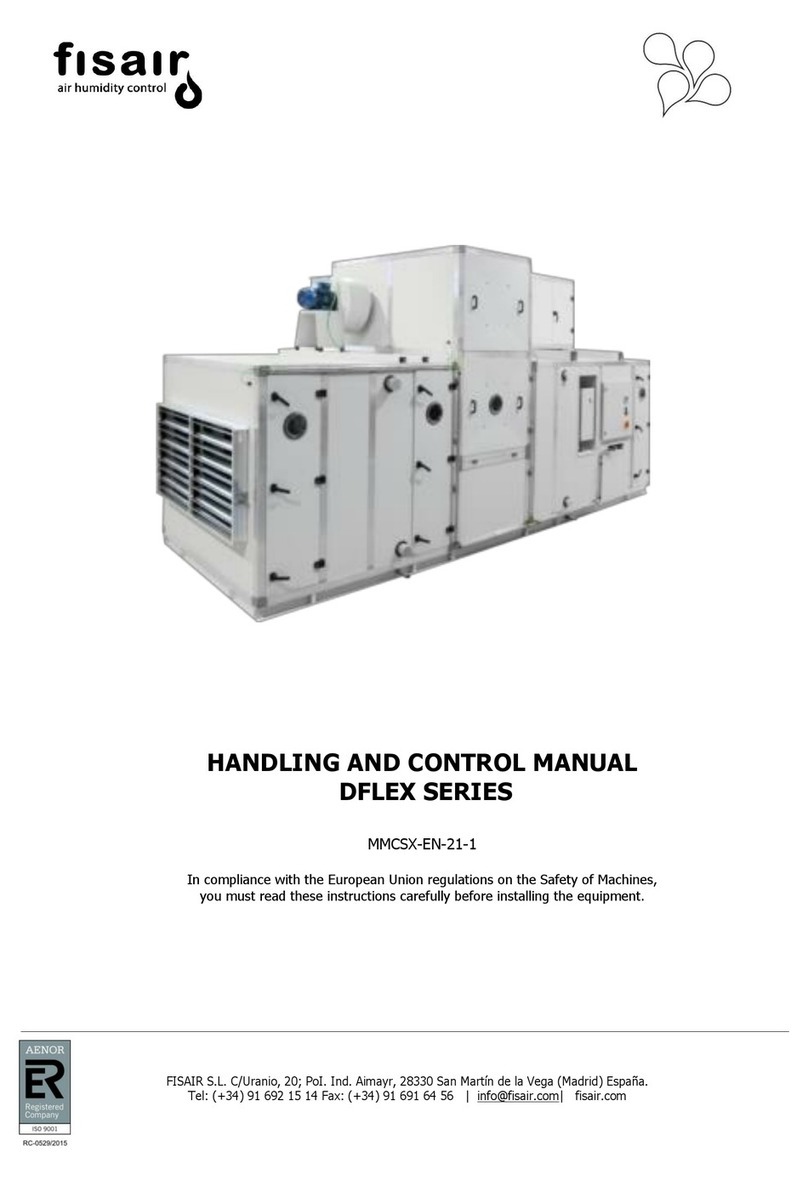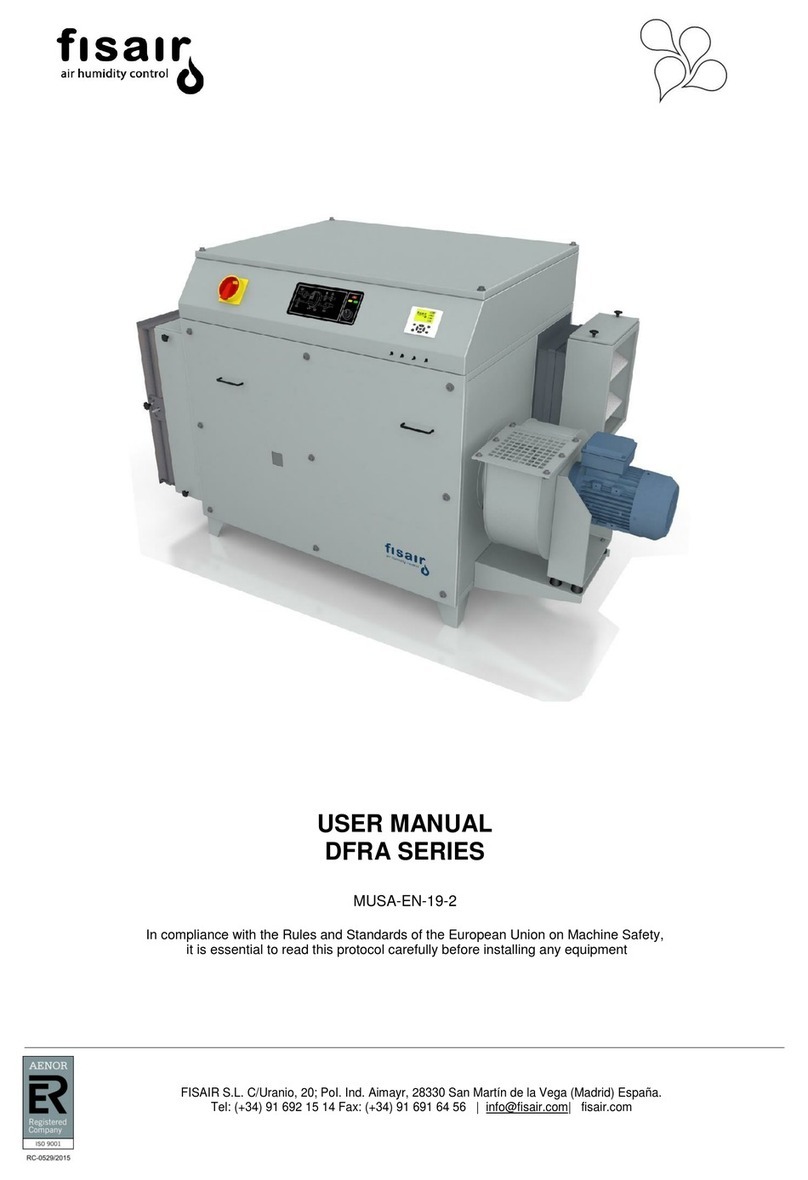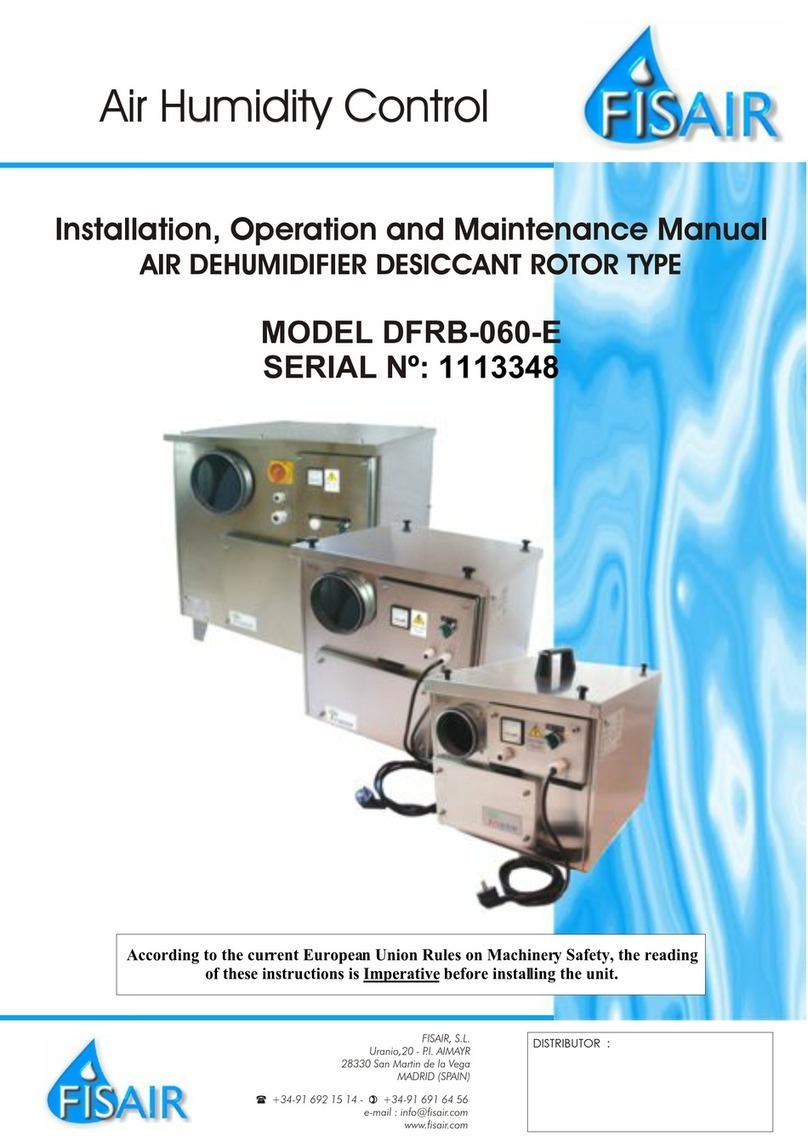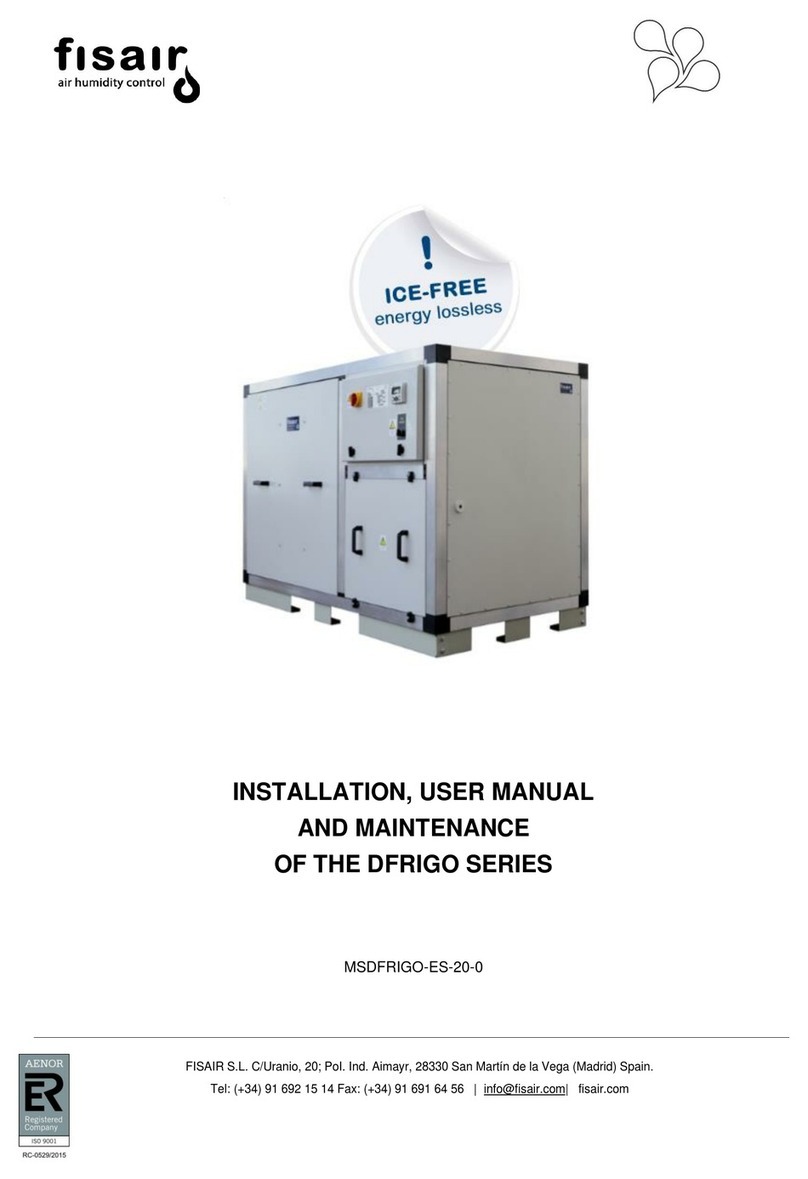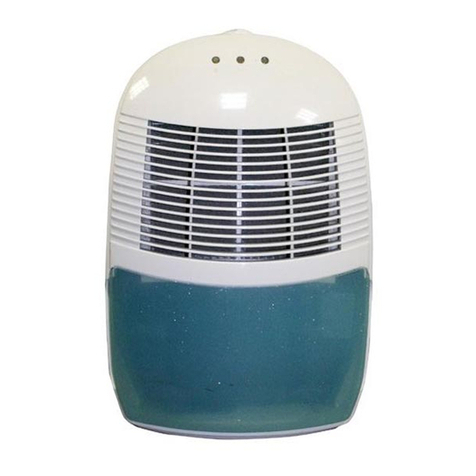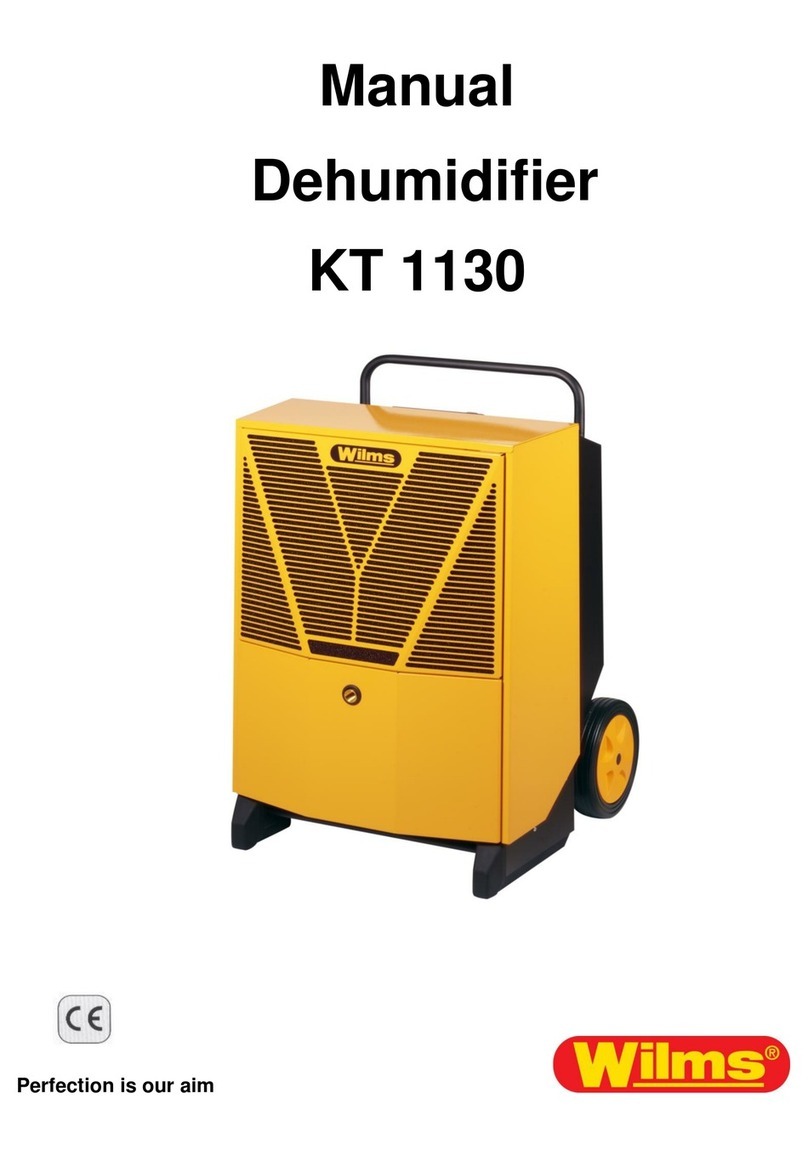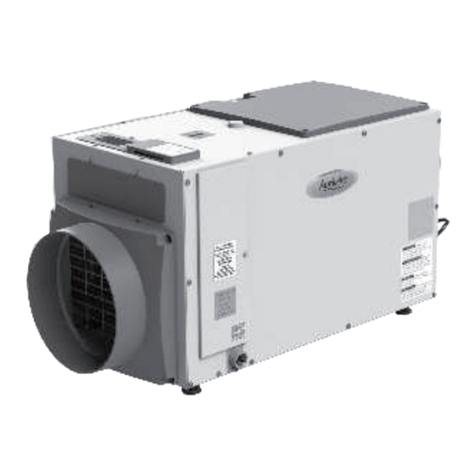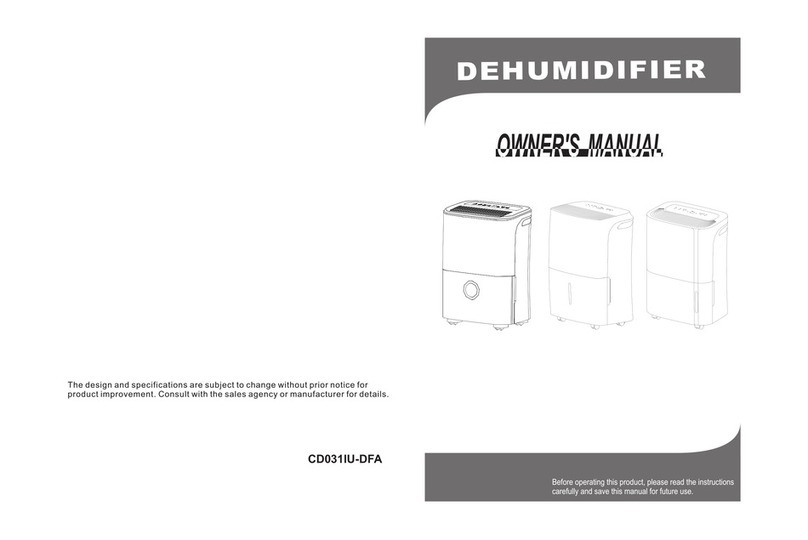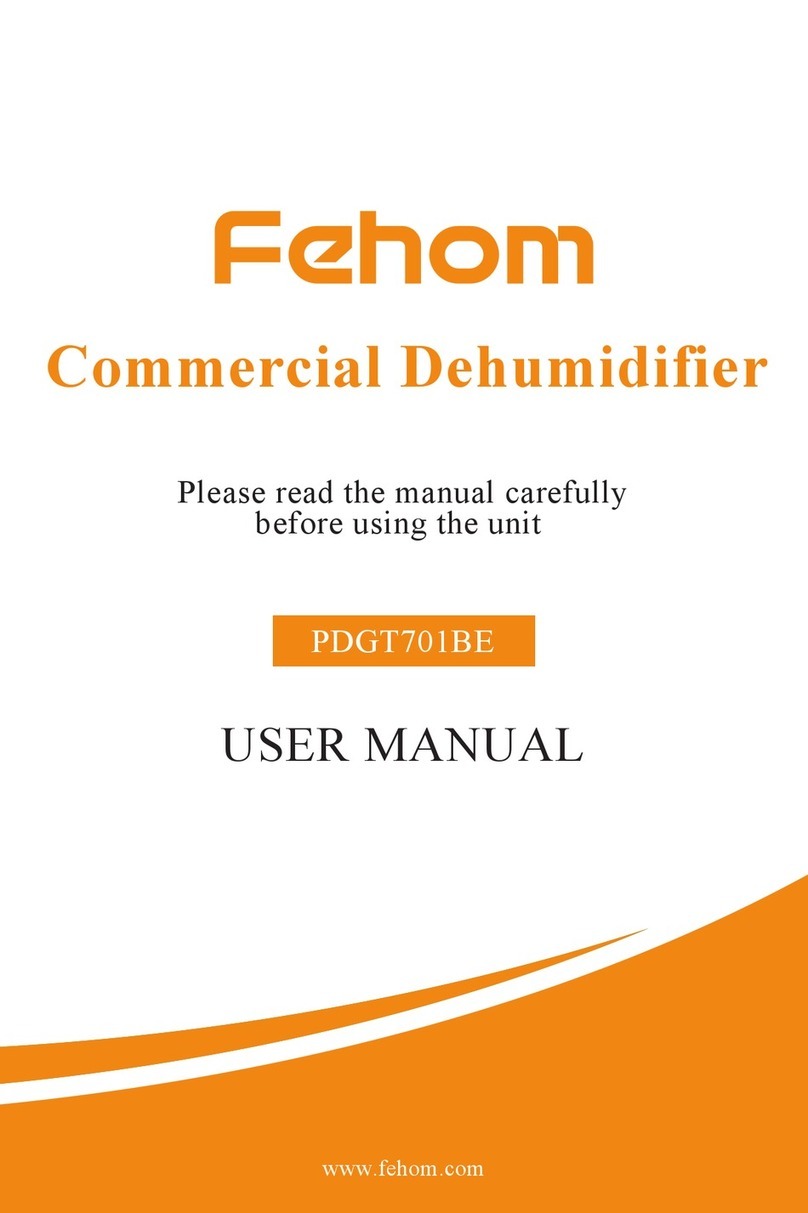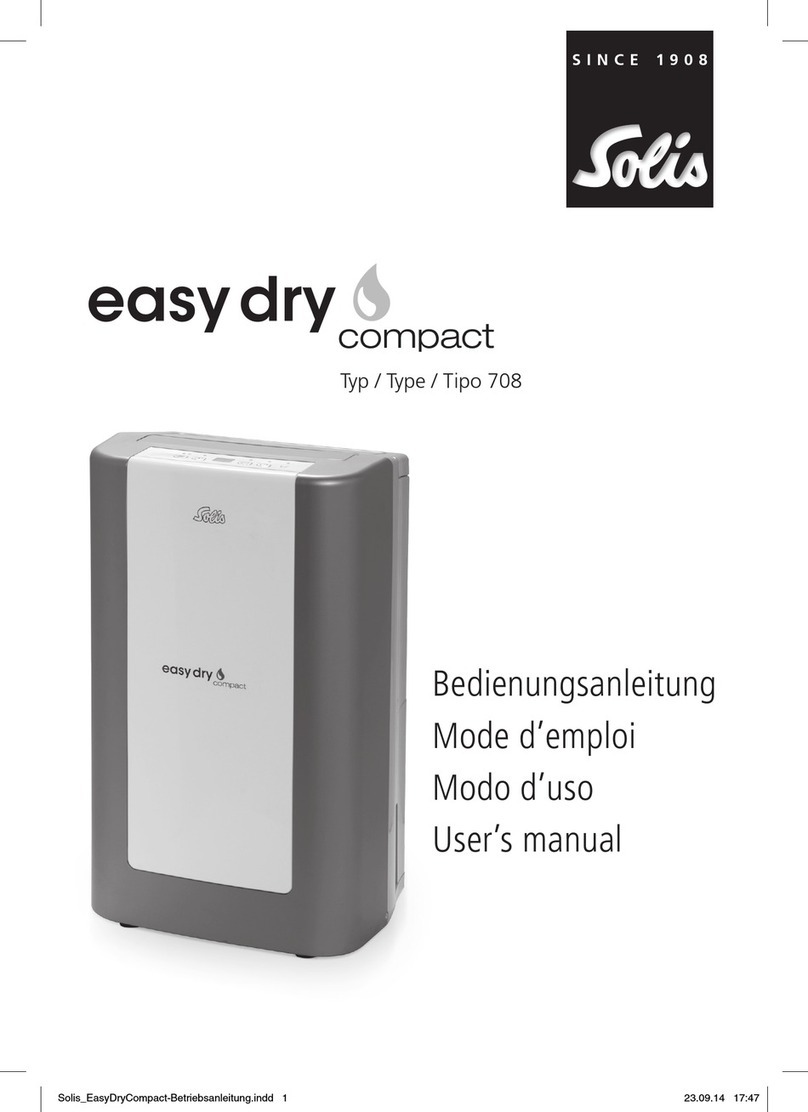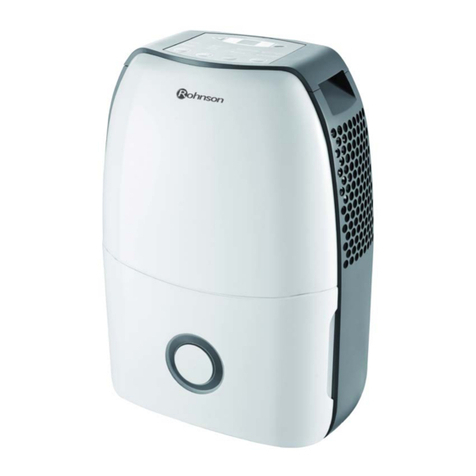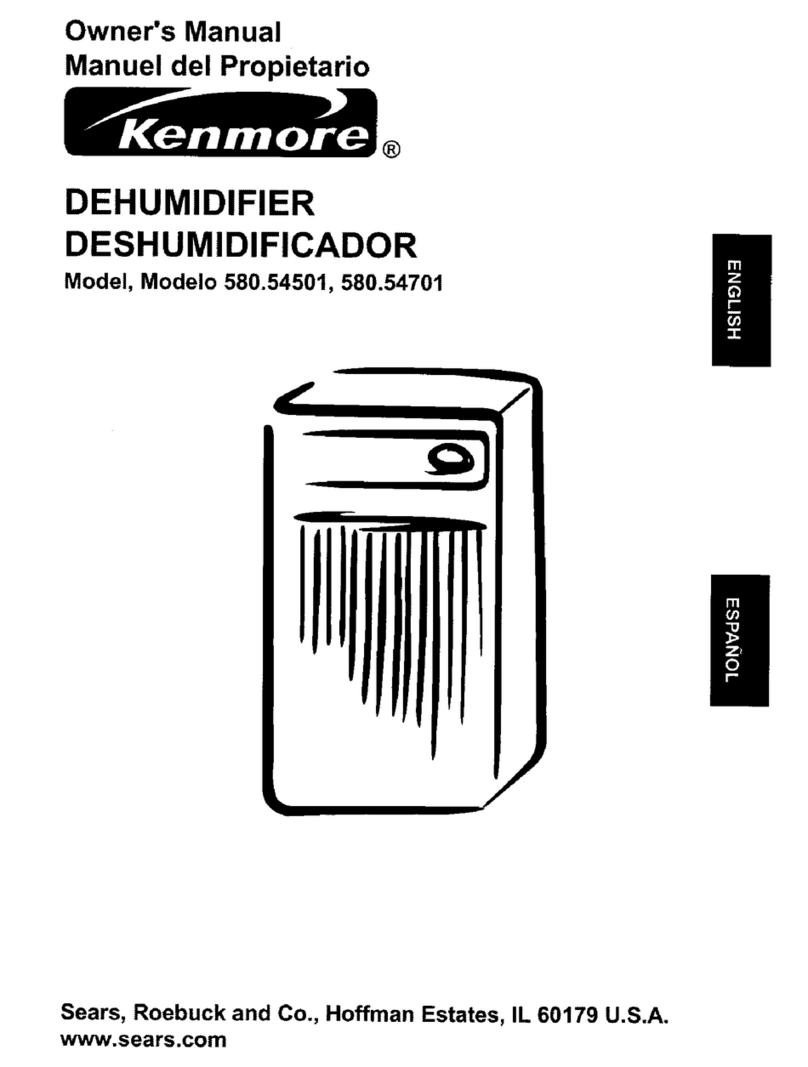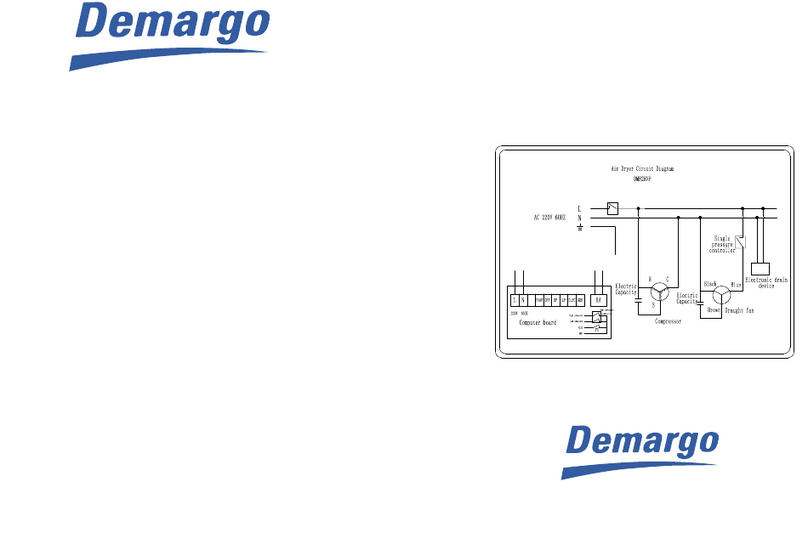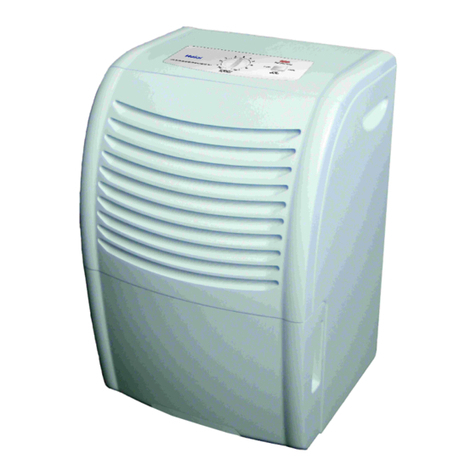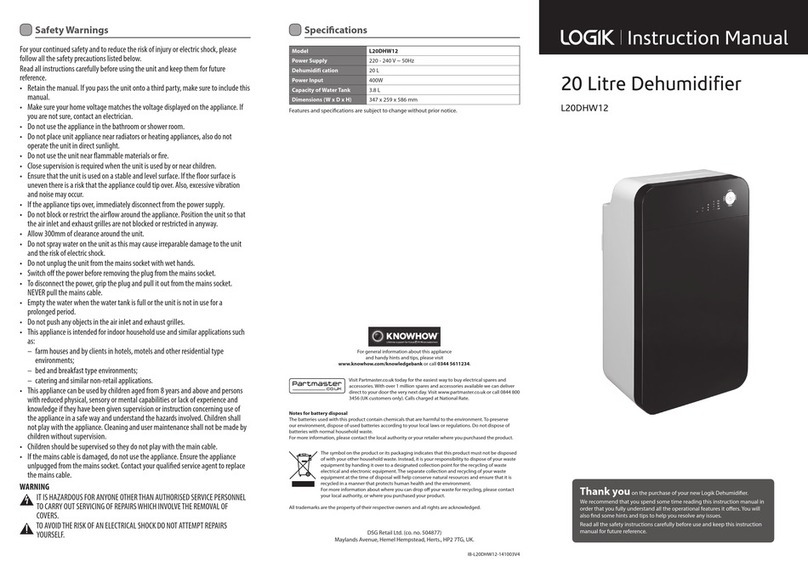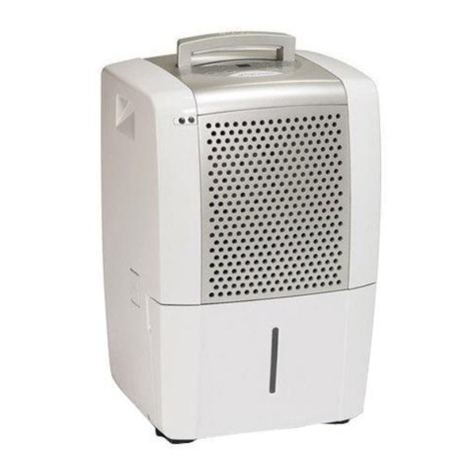
DFRA Series Handling and Control Manual |
h) Measurement and supervision:
Temperature of the reactivation air measured by the probe (ST1).
Process air temperature measured by the probe (ST0) after the pre-heating
battery BC1.
Process air temperature measured by the probe (ST3) after the pre-cooling
battery BF1.
Process air temperature measured by the probe (ST4) after the post-
cooling battery BF2.
Process air temperature measured by the probe (ST4) after the post-
heating battery BC2.
Synopsis of component operation screen.
Monitoring the proportional modulation of the BR (power delivered by the
reactivation battery BR).
Monitoring the power delivered by the pre-heating battery BC1.
Monitoring the power delivered by the pre-cooling battery BF1.
Monitoring the power delivered by the post-cooling battery BF2.
Monitoring the power delivered by the post-heating battery BC2.
Humidity measurements (relative, absolute, dew point or mixing ratio) and
temperature measured by the probe SH1-ST2 to be installed in the process
air inlet or return.
Humidity and temperature measurements by the probe SH2-ST4 to be
installed in the dry air supply.
Monitoring humidity set point.
Monitoring maximum humidity alarm set point.
Minimum reactivation air flow of and rotor rotation.
i) Safety and alarms:
Timing at the disconnection of the humid-air motor fan and the gearmotor
for cooling the equipment.
Alarm and equipment shutdown due to lack of air in the reactivation.
Alarm and equipment shutdown due to lack of rotation of the desiccant
rotor.
Alarm and equipment shutdown due to triggering any motor thermal cut-
off.
Alarm and equipment shutdown due to triggering electrical protective
devices of the heaters.
Alarm and heater shutdown due to excessive SSR temperature.
Alarm for blocked process and reactivation filters (if applicable).
Alarm and BR heater shutdown due to excessive reactivation temperature
as measured by probe ST1.
BC2 heater shutdown due to excessive temperature as measured by
operating thermostat TF3. To be reset manually.
